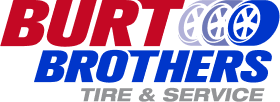One of the most important and easiest things you can do to maintain your car is to check your vehicle’s fluid levels regularly. Cars utilize different kinds of fluids for various purposes. These fluids keep them in good working order so that you can travel safely to your destinations in all kinds of conditions. They play vital functions in lubricating moving mechanical parts, providing the pressure needed in hydraulically operating systems such as braking, and keeping your vehicle systems’ temperatures regulated so that they don’t wear and give out prematurely.
In this article, we will look at some important fluids that you want to be aware of and how to monitor them between visits to your Utah auto repair shop.
Transmission Fluid: The purpose of the transmission fluid is to cool and lubricate the transmission, including bearings, valves, gears, etc., and to keep the seals flexible.
Some vehicles contain sealed transmissions, which require a special procedure to monitor the fluid levels. However, most of the time, you can check the level of transmission fluid with a dipstick.
When checking with a dipstick, make sure the car is warmed up first. A great time to check it is after you arrive home from work when the transmission is warm, and the car has recently shifted through all its gears. Leave the engine idling, set the parking brake, and push the foot brake. Set the transmission in Park or Neutral, per the owner’s manual. Raise the hood and take the dipstick out of the tube. Wipe it clean with a cloth and place it back in. When you remove the dipstick again, check to see if the fluid is between the lower and upper-level markings. Add fluid accordingly.
Engine Oil: Engine oil cleans and cools internal engine parts, as well as lubricates moving parts. Not having enough oil can cause significant damage to your engine.
Check the engine oil while the engine is cold and not running. Raise the hood, take the oil dipstick out of the tube, wipe it clean with a clean rag, and then place it back into the tube. After you remove the dipstick, you can check to see if the oil level is between the lower and upper-level markings. If below or at the lower mark, add enough oil to raise it to the upper mark. Generally, about a quart of oil will do the job.
Engine Coolant: Also known as antifreeze, engine coolant keeps the engine from freezing up in winter, keeps it cool in summer, and protects it from corrosion and rust all year.
When checking the coolant level, make sure that the engine is cold and not running. Locate the engine’s reservoir for its coolant recovery system. Usually, this is a clear plastic container placed by the radiator or on an inner fender panel. Lower (cold) and upper (hot) level markings will be molded onto the reservoir, and if the fluid level inside is lower than the bottom mark, then add coolant up to the lower mark. Do not add anything higher.
Power Steering Fluid: Power steering fluid works to transmit hydraulic pressure and assists in protecting the system’s rubber hoses and seals.
To check it, locate the fluid reservoir as part of the pump. Remove its cap and dipstick, wipe it clean with a rag, and then insert it back into the reservoir. Once you remove it, you can check to see if the fluid is between the lower and upper-level markings. If the fluid level is close to or beneath the lower fluid mark, then add enough fluid up to the upper mark.
Brake Fluid: Brake fluid helps lubricate and protect the hydraulic components in the braking system. It also creates the force needed to power the braking system and helps bring your vehicle to a safe stop.
Raise the hood and find the brake fluid reservoir to check your vehicle’s brake fluid level. You can usually find it on top of the master cylinder, which is at the back of the engine compartment at the driver’s side. Most cars will have a clear plastic reservoir with lower and upper markings on them. If the brake fluid is in between the lower and upper marks, then it’s good. Should the fluid level be near, at, or below the bottom mark, then you should have the brake system checked for leaks or wear at your local Bountiful auto repair shop at the first opportunity.
Windshield Washer Fluid: Washer fluid is a non-freezing cleaning solution that keeps the windshields and headlights clear and clean to use.
If the washer fluid level in the clear plastic reservoir is low, remove its cap and then fill it to the top. If you live somewhere with freezing temperatures, use an antifreeze solution in the winter. In summer, you may want to use bug-removing washer fluid.
Tips:
- Don’t overfill your fluids, as too much fluid may be harmful as well.
- When checking fluid levels, park on level ground. Parking on a tilt will give you a false reading.
- Look at the automaker’s specifications in the owner’s manual. Every car is different. Be sure to learn where and how to check and refill fluids in your vehicle.
- Before removing caps and dipsticks, clean around them.
- If you have any fluids requiring frequent filling, get your vehicle checked out to rule out fluid leaks.
Fluids are the lifeblood of any vehicle. Without them, your car cannot operate properly and will wear out much more quickly. Checking and refilling fluids regularly can significantly increase the life of your vehicle.





